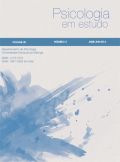CÓMO BENDECIR LA LOS NIÑOS: GEOGRAFÍAS DE CUIDADO INFANTIL Y TERRITORIOS DE LA INFANCIA
Resumen
En este texto nuestra atención se centra en comprender cómo se materializan en los espacios las relaciones de cuidado entre padres, hijos e hijas. La intención es comprender cómo las relaciones de cuidado se vuelven espaciales, comprender cómo una geografía del cuidado engendrada por los padres constituye una geografía de la paternidad. Traemos al debate la investigación de Aitken (2019a, 2019b) sobre las familias eslovenas que fueron borradas por la historia, los instrumentos oficiales de ciudadanía y la Ley de Extranjería y cómo afectó las relaciones de cuidado de los padres con sus hijos e hijas. Continuando con el texto, presentamos un tema que ha venido siendo recurrente en nuestras investigaciones, ahora en territorio brasileño: las prácticas de los curanderos y bendectores. Los trabajos de Pereira y Gomes (2018) y Lopes (1998) nos ayudan a comprender mejor a estos sujetos que ejercen rituales curativos, que pueden considerarse prácticas de cuidado, en las que el bendector forja a su alrededor una red de protección. Relacionando la figura del padre con la de lo bendector, analizamos al personaje Zeca Chapéu Grande, de la novela Torto arado, de Itamar Vieira Junior (2020), como una posible representación de este sujeto que cuida a sus propios hijos e hijas al mismo tiempo que tiene una paternidad en expansión más allá de hogar, abrazando a todos aquellos que buscan cuidado y protección. Así, a lo largo del texto, la intención fue resaltar las relaciones entre padres e hijos e hijas que se dan en los espacios de sus vidas y cómo los padres están creando una geografía del cuidado en su entorno.
Descargas
Citas
times of political madness, Gender, Place & Culture, DOI: 10.1080/0966369X.2018.1556612
Disponível em: https://doi.org/10.1080/0966369X.2018.1556612
Aitken, S. C. (2019b). Jovens, direitos e território: apagamento, política neoliberal e ética pós-infância. Brasília: Universidade de Brasília.
Le Grange, L. (2018). Whatis (pos) qualitative research? Disponível em:https://www.journals.ac.za/index.php/sajhe/article/viewFile/3161/1911. Acesso em: 20 mar 2020.
Lopes, J, J. M. & Vasconcelos, T. de (2005). Geografia da Infância: reflexões sobre uma área de pesquisa. Juiz de Fora: Feme.
Lopes, J, J. M. & Vasconcelos, T. de (2006). Geografia da infância: territorialidades infantis. Currículo sem Fronteiras, 6, (1), 103-127.
Lopes, J. J. M. (1998). "Penerando" a chuva: pressupostos para uma prática etnogeográfica e endocultural. (Dissertação de Mestrado) - Curso de Programa de Pós-Graduação em Educação, Universidade Federal de Juiz de Fora, Juiz de Fora, MG, Brasil.
Pereira, E.de A,; Gomes,, N. P. de M.. (2018). Assim se benze em Minas Gerais: um estudo sobre a cura através da palavra. Belo Horizonte: Mazza Edições, 2018.
Porteaus, J.D. (1988). Topocide: the annihilation of place. In: Eyles, J. &Smith, D, M. (org..). PORTEOS, J. Douglas. Quantitative methods in geography. Cambridge: Polity Press.
Vieira Junior, I. (2020). Torto Arado. São Paulo: Todavia.
Derechos de autor 2022 Psicologia em Estudo

Esta obra está bajo licencia internacional Creative Commons Reconocimiento 4.0.
As opiniões emitidas, são de exclusiva responsabilidade do(s) autor(es). Ao submeterem o manuscrito ao Conselho Editorial de Psicologia em Estudo, o(s) autor(es) assume(m) a responsabilidade de não ter previamente publicado ou submetido o mesmo manuscrito por outro periódico. Em caso de autoria múltipla, o manuscrito deve vir acompanhado de autorização assinada por todos os autores. Artigos aceitos para publicação passam a ser propriedade da revista, podendo ser remixados e reaproveitados conforme prevê a licença Creative Commons CC-BY.
The opinions expressed are the sole responsibility of the author (s). When submitting the manuscript to the Editorial Board of Study Psychology, the author (s) assumes responsibility for not having previously published or submitted the same manuscript by another journal. In case of multiple authorship, the manuscript must be accompanied by an authorization signed by all authors. Articles accepted for publication become the property of the journal, and can be remixed and reused as provided for in theby a license Creative Commons CC-BY.
















